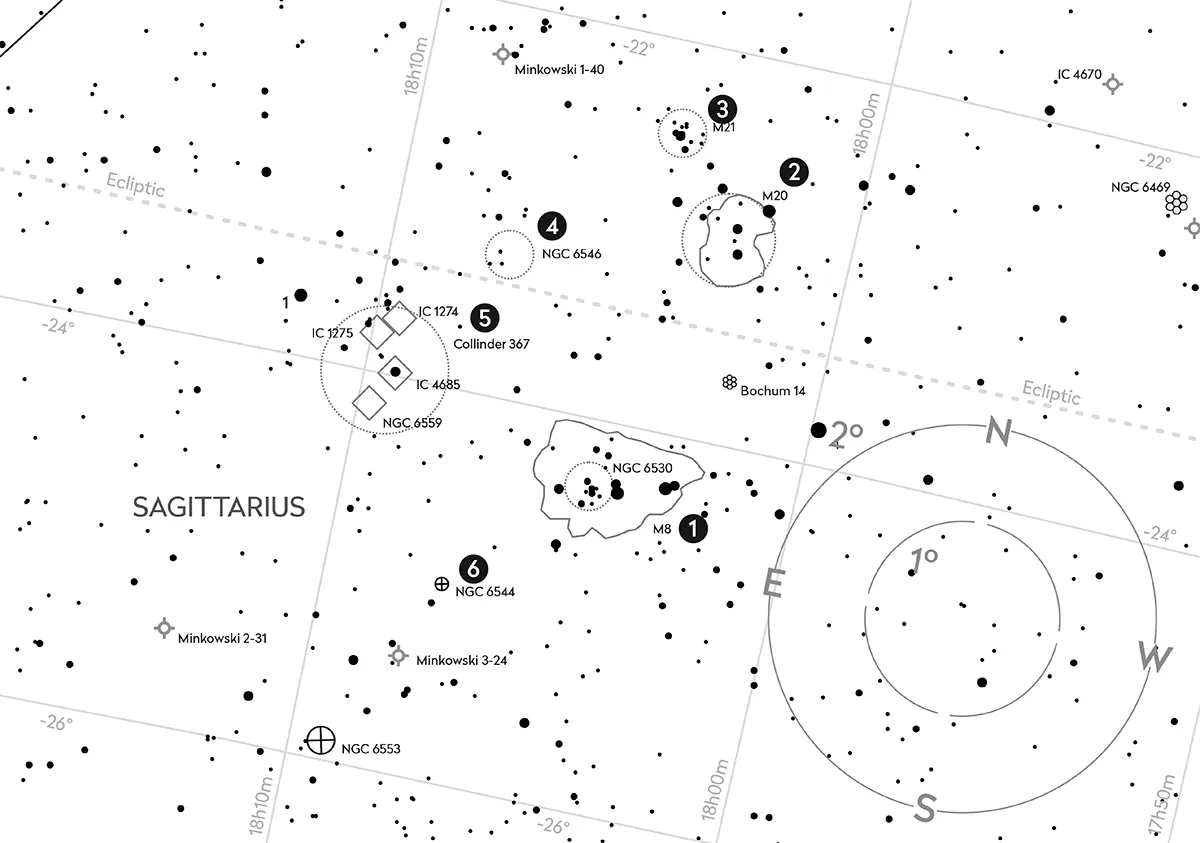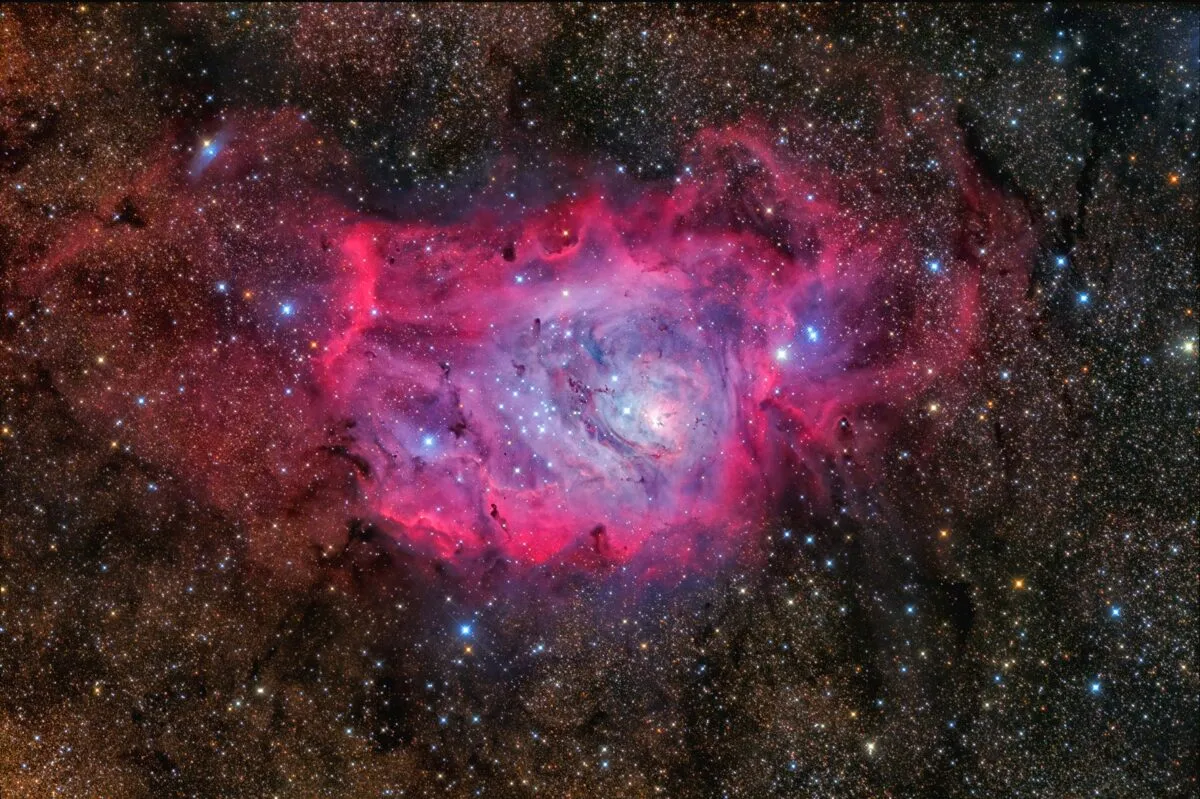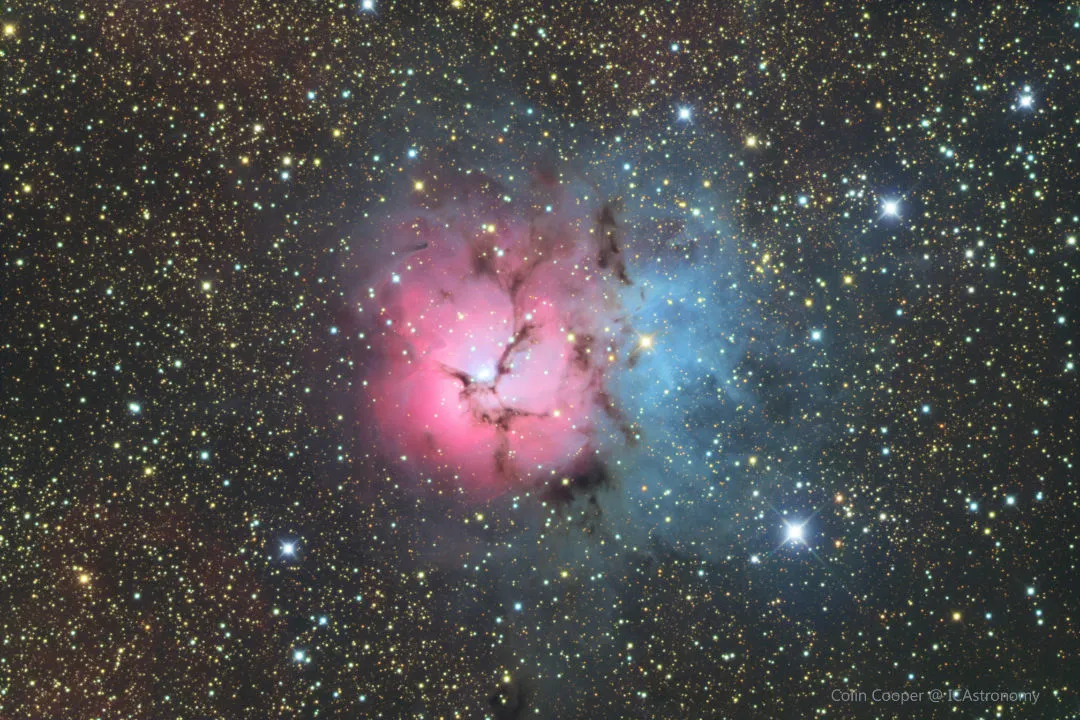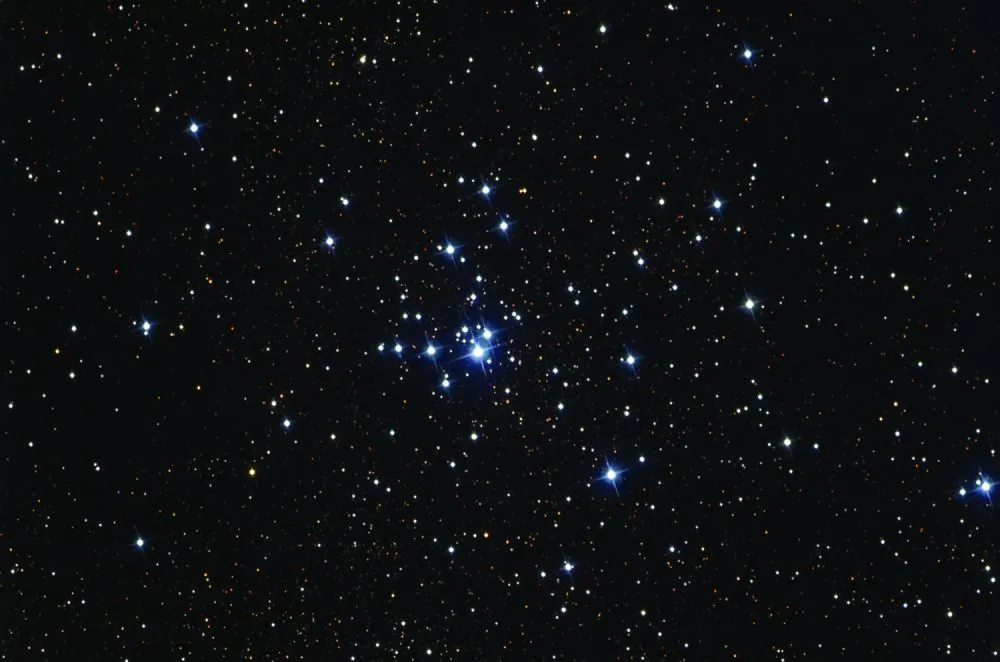Sagittarius is a wonderful constellation. Not only does it contain the well-known Teapot asterism, it also shares its patch of the sky with the band of the Milky Way, making it a good marker for those trying to see the Milky Way in the night sky.
Indeed, many a stargazer has probably noticed that the starry band of the Milky Way looks a little like steam rising from the spout of the teapot.
Where Sagittarius really gets interesting, though, is when you observe it through a telescope, as there are plenty of deep-sky objects to see within the constellation's boundary.

An exploration of objects in Sagittarius includes the Lagoon Nebula and the Trifid Nebula, as well as beautiful open star clusters.
Below are 6 deep-sky objects to see in Sagittarius, as selected by The Sky at Night presenter and expert astronomer Pete Lawrence. See if you can tick them all off and complete Pete's Sagittarius tour.
For more help finding Sagittarius in the night sky, refer to our pick of the best summer constellations (it's number 3 on the list). And for help locating each of the objects listed below, download our PDF chart.
Clear skies!
6 deep-sky objects in Sagittarius
1
The Lagoon Nebula

M8, or the Lagoon Nebula, together with its embedded cluster (NGC 6530), is compromised by a low altitude from the UK.
M8 is easy to locate, 6˚ north of Alnasl (Gamma (γ) Sagittarii), the star marking the lip of the Teapot asterism’s spout. At mag. 4.6, the Lagoon is visible to the naked eye and an easy target for a 150mm scope.
It looks divided – a bright condensed nebula separated from its associated star cluster by a dark lane. A few bright stars can be seen in the nebula’s bright part and a hint of nebulosity can be seen all over the cluster.
2
The Trifid Nebula

M20, the Trifid Nebula, lies 1.4˚ north and 0.3˚ west of M8. It shines with an integrated magnitude of 6.4, appears 13 arcminutes across and is a beautiful object.
A small telescope shows M20 as a hazy glow, a bright region to the south with a dimmer glow to the north.
Three dark lanes cross the brighter component, features that appear distinct through a 250mm scope. The lanes appear to emanate from the nebula’s centre, snaking as they head out to its edge.
These lanes give the nebula its name, Trifid meaning ‘three lobe’. The brighter southern component is a glowing emission nebula that appears pink on long exposure photographs. The northern glow is reflection nebulosity and appears blue in photos.
3
M21

If you’re looking at M20, you’ll already be in the correct part of the sky to see the open cluster M21.
This is a relatively bright open cluster that shines with an integrated magnitude of 5.9.It has a diameter around 15 arcminutes and is located 0.6˚ northeast of the Trifid Nebula.
The edge of this cluster isn’t easy to discern, this being a faint, star-rich part of the sky due to the background presence of the Milky Way.
A 150mm scope reveals 20-plus stars while a 250mm instrument shows about 45. A pair of stars sits at the centre of the cluster and forms one vertex of a triangle pattern through smaller instruments.
A loop of faint stars can be seen to the north of the bright central pair.
4
NGC 6546

NGC 6546 is another open cluster. It is fainter than M21, with a listed integrated magnitude of 8.0. It shares a similar apparent diameter of 15 arcminutes, but it’s much trickier to identify thanks to the myriad background stars in the area.
A 250mm scope confirms it’s a cluster, cramming around 30 stars into a region 10 arcminutes across.
The most prominent ‘feature’ visually is a small triangle formed from three slightly brighter stars in the object’s centre.
Using a wide-field telescope eyepiece, the region southeast of the cluster appears darker than other directions. NGC 6546 is located 1˚ southeast of M21.
5
Collinder 367
Collinder 367 is another open cluster near M8, which is listed with an integrated magnitude of 6.4 and an apparent diameter of 37 arcminutes.
There are lots of stars in this region and it’s tricky to know where the background ends and the cluster begins.
Collinder 367 can be found by extending the line from M21 through NGC 6546 for a further three-quarters of a degree.
Some weak patches of diffuse nebulosity run through the region, listed as IC 1274, IC 1275, IC 4685 and NGC 6559. These are best revealed through long-exposure imaging. Smaller instruments reveal 15 well-defined stars.
6
NGC 6544

Globular cluster NGC 6544 lies 1˚ southeast of M8. It has an integrated magnitude of +8.1 and is easy to see with smaller scopes.
A 150mm instrument will begin to resolve some of its outer stars and will show a 12th magnitude star just to the west
of the cluster’s core.
It’s quite small through a 250mm scope, slightly elongated in a northwest-southeast direction, and it appears around 1.5 arcminutes across.
Higher powers show some mottling in the cluster’s general appearance and reveal a brightening towards the core. Also, a number of brighter stars give the false impression that the core is off-centre.
Pete Lawrence is an experienced astronomer and a presenter on The Sky at Night. This guide originally appeared in the July 2021 issue of BBC Sky at Night Magazine.

